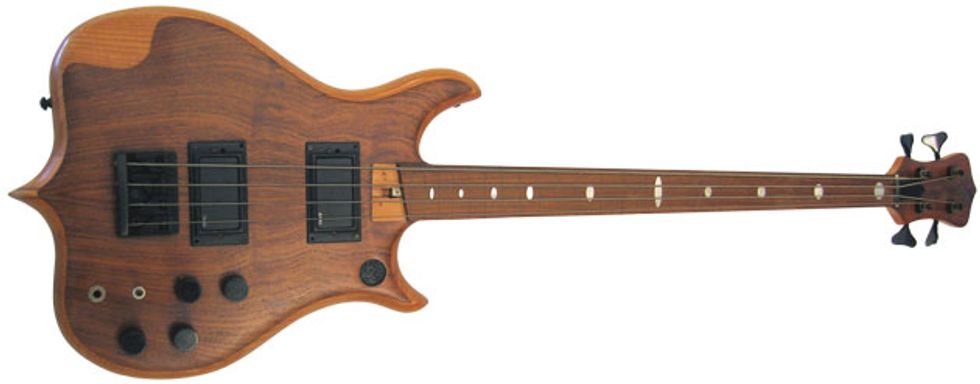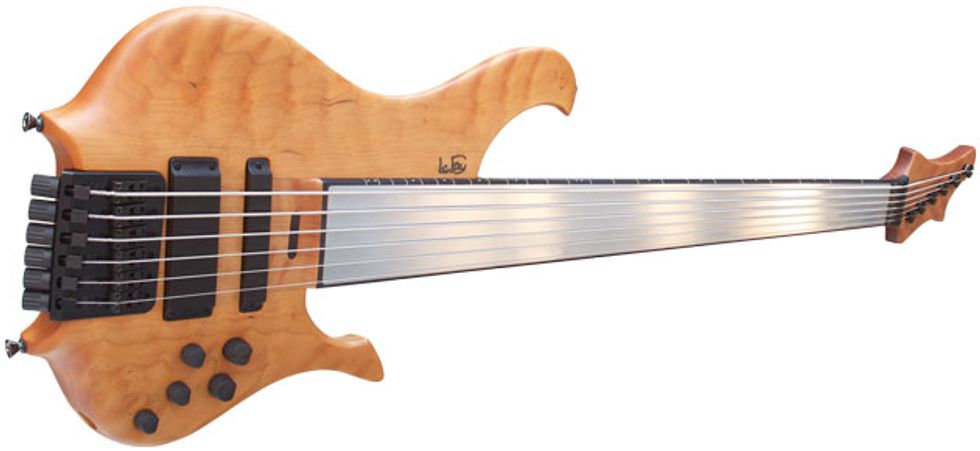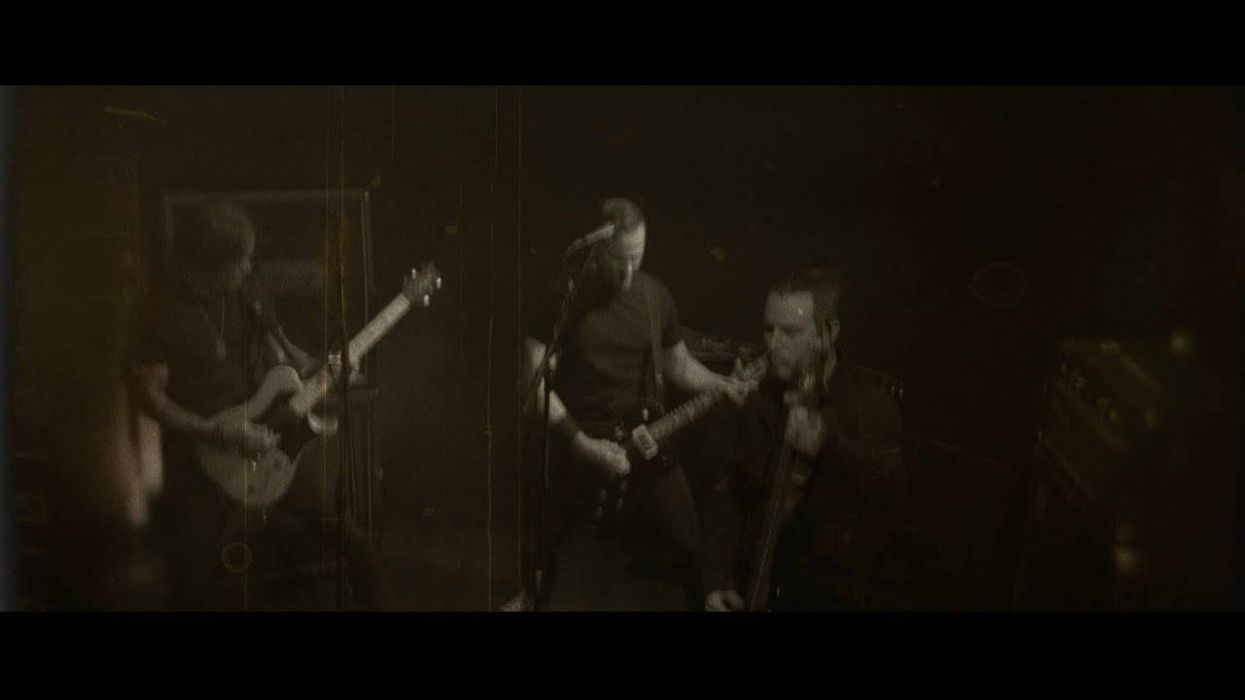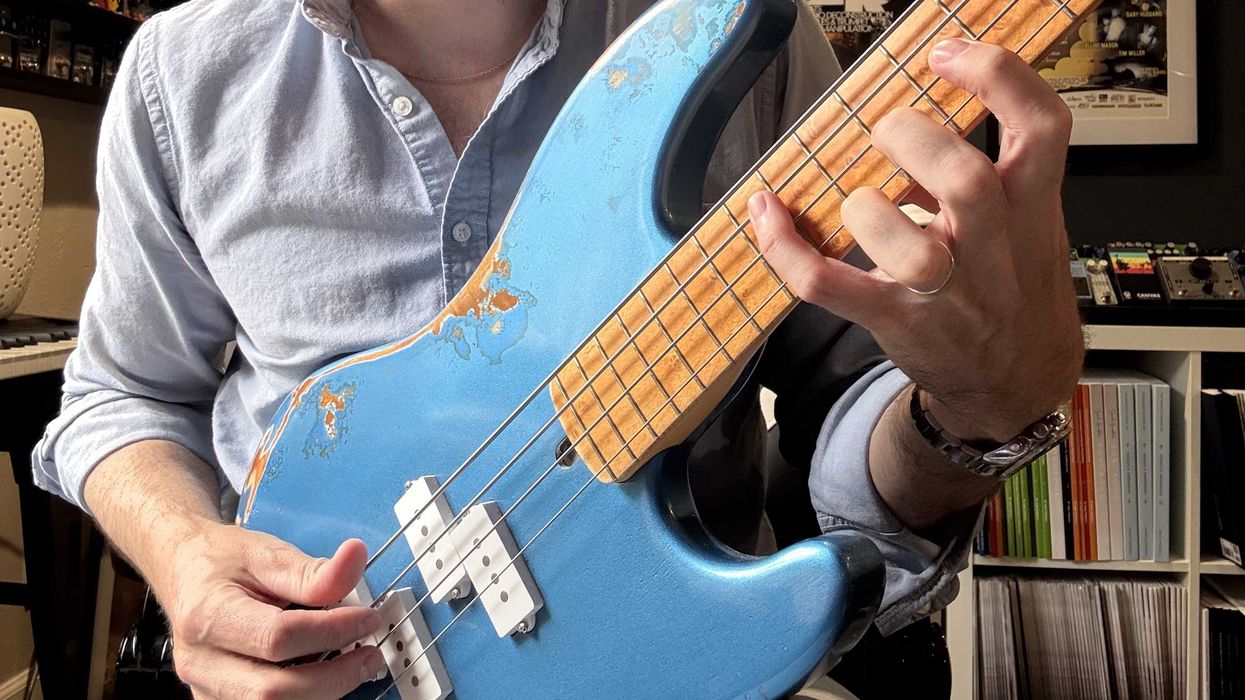Hot on the heels of our recent columns on headless basses and their technology, here’s another “less” topic for you: the fretless electric bass. The instrument has had its ups and downs since the mid ’70s, when Jaco Pastorius made it popular. Unlike the ’80s, these days we don’t see the fretless bass too often in pop bands, but it’s still very present in jazz and progressive rock.
There’s no data on sales figures for fretless instruments among overall bass sales, but my personal guess is that fretless basses represent about three percent of the total market. Some people say it’s actually less than one percent. One uncertainty here is the number of home builds, such as in Photo 1. That’s because this mod of pulling out the frets and refinishing the fretboard is relatively easy.
That market share is pretty low considering the high number of renowned bass masters who feature a fretless instrument in their music. It appears as if the higher the skills, the more likely a musician is to pick up a fretless. For many bassists who’ve fallen in love with the fretless, it offers a more expressive way of playing. Of course, for the novice it also offers more chances to fail, but players planning to get a second (or third) bass should consider adding a fretless to their arsenal.
What makes it so special? Basically, it comes down to the enhanced possibilities of the left hand. A fretless lets you slide into notes, add singing vibrato, or vary the pressure you use to press a string against the fingerboard—and all of this with the intimate feel of the vibrating string right under your fingers.
Even the angle at which your finger presses against the fretboard makes a tonal difference. Simply put: It sounds more like a fretted bass when you use the nail side of the fingertip and more like an upright when you play with the softer middle of the pad. The fretless sounds less perfect than a fretted bass— notes are less sinusoidal and have a stronger tonal variation over the entire sustain period, and chords sound especially lively and organic.
Everything has its downside, and the fretless might not fit every playing style. Slapping comes to mind—it works, but the tone often lacks that sharp, metallic attack of the frets.
Jaco covered his fingerboard with hard epoxy, which gave his sound a less muddy, more articulate upper midrange. The Le Fay bass in Photo 2 takes this even further by using a stainless steel fretboard. Still, even with the enhanced treble range of a slapped string wobbling against a flat, metal fretboard, the fretless sound is different from that of a fretted bass, although “different” doesn’t always have to be bad.
Who invented the fretless bass? Urban legend has it that Jaco was the inventor of the fretless bass. Sometime around 1970 he removed the frets from his 1962 Fender Precision, filled the gaps with wood strips, and epoxied the fingerboard. The hard fingerboard produced a singing and lively tone that soon became his trademark. Ultimately this mod and its resulting timbres became extremely popular. More than once, Jaco added to the legend by crediting himself in interviews for the invention.
This fretless Le Fay Remington Steele bass has a stainless-steel fingerboard. Photo courtesy lefay.de
In fact, the electric bass started as a fretless as early as 1935 with Paul Tutmarc, though as a builder he focused on size and pickups, and essentially kept everything else from its predecessor, the upright. Tutmarc’s bass remained fretless until 1940, when Paul Tutmarc Jr. entered his father’s business and produced smaller fretted basses that could be played horizontally. So for the first time, the bass player didn’t have to drive in a separate car, follow the rest of the band, and get lost more than once—a real cause for celebration!
Not much happened technically until the ’50s introduction of the Fender Precision, and from that time on, all electric basses had frets. The first return to fretless came around 1965 with the introduction of a Hohner hollowbody made by the Bartell company in California. According to Bartell’s history, this preceded the Ampeg AUB-1 fretless by a year. It wasn’t until 1971 that the maker of Jaco’s modded Precision joined the party with their first production model.
So again, who invented the fretless electric bass guitar? Let’s put the Tutmarc fretless aside for a moment, simply because as a scaled-down upright bass, it’s hard to call it an invention.
The first person to use a modern fretless is the Rolling Stones’ Bill Wyman. According to his coffee-table book, Bill Wyman’s Scrapbook, he converted a cheap Japanese bass to fretless as early as 1961 and used it with his first band, the Cliftons, and later on for several tunes with the Stones. So much for the popular notion that the fretless only has its place in jazz!
Of course, the working musician will most often need a fretted bass and only switch to fretless for a limited part of a gig—or even switch within a song. And there are a few solutions for that task of switching, so that’s what we’ll investigate next time.

















